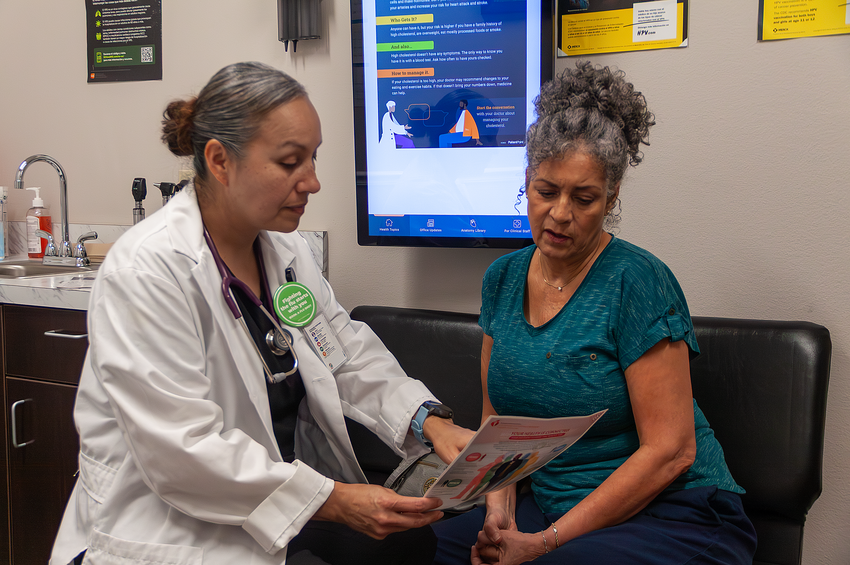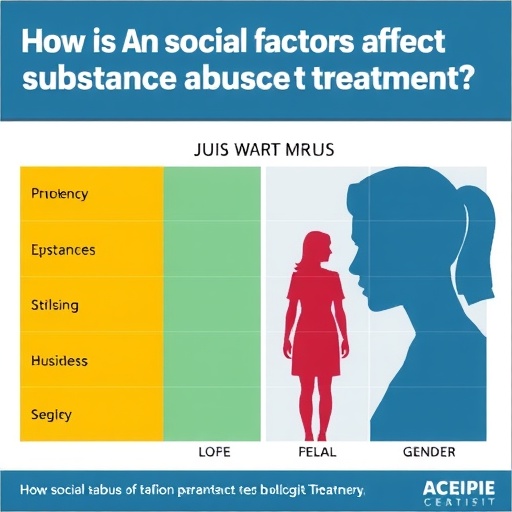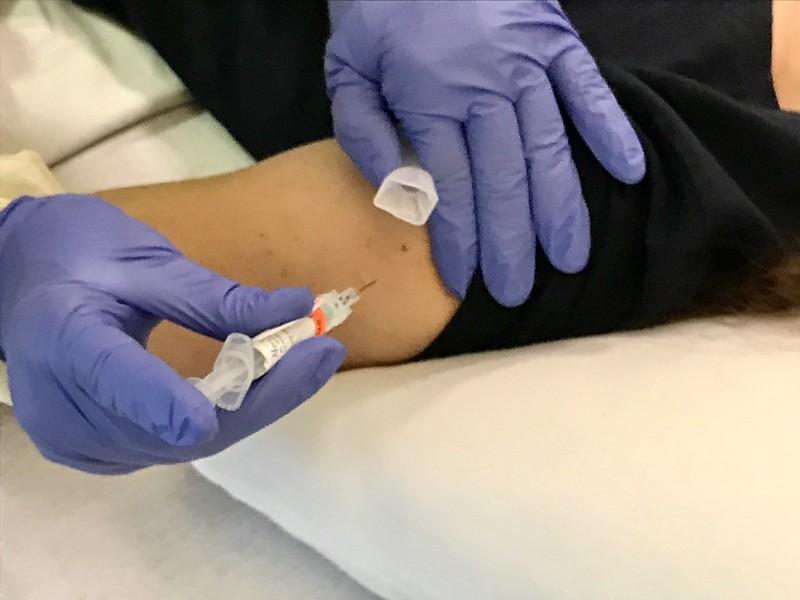Report on Public Health Awareness of Cardiovascular-Kidney-Metabolic (CKM) Syndrome and Alignment with Sustainable Development Goals
Introduction: Addressing SDG 3 through Integrated Health
A survey conducted in August 2025 by The Harris Poll on behalf of the American Heart Association reveals a critical gap in public health knowledge concerning Cardiovascular-Kidney-Metabolic (CKM) syndrome. This condition, which integrates heart disease, kidney disease, diabetes, and obesity, affects nearly 90% of adults in the United States. The widespread lack of awareness presents a significant obstacle to achieving Sustainable Development Goal 3 (Good Health and Well-being), particularly Target 3.4, which aims to reduce premature mortality from non-communicable diseases (NCDs). This report analyzes the survey’s findings and the subsequent initiatives, framing them within the context of the SDGs.
Survey Findings: A Barrier to Good Health and Well-being (SDG 3)
Key Data on Public Awareness and Perceptions
The survey, which included approximately 4,000 U.S. adults, highlighted a profound disconnect between the prevalence of CKM syndrome and public understanding. This knowledge deficit directly impacts the ability of individuals to engage in preventative care, a cornerstone of SDG 3.
- Only 12% of U.S. adults reported having heard of CKM health or CKM syndrome.
- A significant majority (68%) incorrectly believed it is best to manage the interconnected conditions individually or were unsure of the optimal approach.
- 42% did not recognize or were unsure that the health of other organ systems could damage a healthy heart.
- Despite low awareness, there is a strong public desire for information, with 79% agreeing on the importance of understanding CKM health and 72% expressing interest in learning more.
Strategic Initiatives for Advancing Global Health Goals
Public Health Education: A Contribution to SDG 4 (Quality Education)
In response to these findings, the American Heart Association’s CKM Health Initiative™ provides educational resources to enhance public health literacy, aligning with SDG 4 (Quality Education). By disseminating knowledge about healthy lifestyles and disease prevention, the initiative empowers individuals to take control of their health. The educational outreach clarifies the interconnectedness of the body’s systems through simplified explanations:
- The heart circulates blood throughout the body.
- The metabolic system converts blood glucose into energy.
- Metabolic processes produce waste, which is returned to the bloodstream.
- The kidneys filter this waste and balance fluids, which influences blood pressure.
- Blood pressure directly affects the heart’s function.
This educational framework promotes a holistic understanding of health, which is essential for preventing the cycle of CKM syndrome and advancing progress toward SDG 3.
Multi-Stakeholder Collaboration: A Model for SDG 17 (Partnerships for the Goals)
The CKM Health Initiative™ exemplifies the power of multi-stakeholder partnerships as outlined in SDG 17. The collaboration between the American Heart Association and its sponsors—including Novo Nordisk®, Boehringer Ingelheim, Novartis Pharmaceuticals Corporation, Bayer, and DaVita®—demonstrates a commitment from both non-profit and private sectors to address a major public health crisis. This partnership model is crucial for funding, scaling, and implementing effective health interventions that support the broader 2030 Agenda for Sustainable Development.
Conclusion: An Integrated Approach to Health and Sustainable Development
Path Forward
The survey results underscore the urgent need for integrated health strategies that treat the cardiovascular, kidney, and metabolic systems in a coordinated manner. The forthcoming clinical guidelines on CKM syndrome, expected in early 2026, will provide a critical tool for healthcare professionals. By combining targeted public education (SDG 4), robust multi-stakeholder partnerships (SDG 17), and a focus on preventing and treating NCDs, these efforts contribute directly to the achievement of SDG 3, fostering a future of longer, healthier lives for all.
1. Which SDGs are addressed or connected to the issues highlighted in the article?
The article on Cardiovascular-Kidney-Metabolic (CKM) syndrome addresses several Sustainable Development Goals (SDGs) through its focus on public health, awareness, education, and collaborative efforts to combat a widespread health condition.
-
SDG 3: Good Health and Well-being
This is the most prominent SDG addressed. The article focuses entirely on a major health issue, CKM syndrome, which encompasses non-communicable diseases (NCDs) like heart disease, kidney disease, and diabetes. It discusses the high prevalence of risk factors (“Nearly 90% of U.S. adults have at least one risk factor”) and the syndrome itself, directly relating to the goal of ensuring healthy lives and promoting well-being.
-
SDG 4: Quality Education
The article highlights a significant lack of public awareness, stating that “About 9 in 10 U.S. adults have not heard of cardiovascular-kidney-metabolic (CKM) syndrome.” In response, the American Heart Association is launching an initiative that includes a website, educational resources, and a video to help people understand the condition. This effort to disseminate crucial health information and knowledge aligns with the goal of providing inclusive and equitable quality education and promoting lifelong learning opportunities.
-
SDG 17: Partnerships for the Goals
The article demonstrates the importance of collaboration to tackle complex health challenges. The American Heart Association’s CKM Health Initiative is a multi-stakeholder partnership, “made possible by Founding Sponsors Novo Nordisk® and Boehringer Ingelheim, Supporting Sponsors Novartis Pharmaceuticals Corporation and Bayer, and Champion Sponsor DaVita®.” This collaboration between a non-profit organization and several private sector corporations exemplifies the partnerships needed to achieve sustainable development goals.
2. What specific targets under those SDGs can be identified based on the article’s content?
Based on the article’s discussion of CKM syndrome, several specific SDG targets can be identified:
-
Target 3.4: Reduce premature mortality from non-communicable diseases
The target aims to “reduce by one-third premature mortality from non-communicable diseases through prevention and treatment.” The article directly supports this by focusing on CKM syndrome, a cluster of NCDs (heart disease, kidney disease, diabetes, obesity). The American Heart Association’s initiative aims to “prevent a heart attack, heart failure or stroke” through education on prevention strategies like “changes to their eating pattern, physical activity and appropriate treatment.”
-
Target 4.7: Ensure all learners acquire knowledge and skills for sustainable lifestyles
This target focuses on ensuring learners acquire the knowledge needed to promote sustainable development, including sustainable lifestyles. The article describes a major public awareness campaign by the American Heart Association, which is “providing a website and educational resources to help people understand how heart, kidney and metabolic health are connected and take action early.” This initiative directly provides knowledge to the public to promote healthier, more sustainable lifestyles.
-
Target 17.17: Encourage and promote effective public, public-private and civil society partnerships
This target promotes multi-stakeholder partnerships. The article explicitly details such a partnership, where the American Heart Association (a civil society organization) is working with healthcare teams and is funded by a consortium of private pharmaceutical and healthcare companies (Novo Nordisk®, Boehringer Ingelheim, Novartis, Bayer, and DaVita®). This collaboration is a clear example of a public-private-civil society partnership aimed at achieving a common health goal.
3. Are there any indicators mentioned or implied in the article that can be used to measure progress towards the identified targets?
Yes, the article mentions and implies several quantitative and qualitative indicators that can be used to measure progress.
-
Indicators for Target 3.4 (Reduce NCDs)
- Prevalence of risk factors for CKM syndrome: The article establishes a baseline by stating, “Nearly 90% of U.S. adults have at least one risk factor for CKM syndrome.” Progress could be measured by a reduction in this percentage over time.
- Prevalence of CKM syndrome: The article notes the condition affects “nearly 90% of adults.” Tracking the incidence and prevalence of diagnosed CKM syndrome would be a direct indicator of the effectiveness of prevention and treatment efforts.
-
Indicators for Target 4.7 (Education and Awareness)
- Public awareness of CKM syndrome: The survey provides a clear baseline indicator: “12% of U.S. adults had heard of CKM health or CKM syndrome.” The success of the educational initiative can be measured by tracking the increase in this percentage.
- Public interest in learning about CKM syndrome: The survey found that “72% said they are interested in learning more about it.” This can serve as an indicator of public engagement and the potential reach of educational campaigns.
-
Indicators for Target 17.17 (Partnerships)
- Number and type of organizations involved in the CKM Health Initiative: The article provides a qualitative indicator by listing the specific partners: the American Heart Association and its five corporate sponsors. The growth of this partnership or the development of similar ones would indicate progress.
4. Create a table with three columns titled ‘SDGs, Targets and Indicators” to present the findings from analyzing the article.
| SDGs | Targets | Indicators |
|---|---|---|
| SDG 3: Good Health and Well-being | Target 3.4: By 2030, reduce by one-third premature mortality from non-communicable diseases through prevention and treatment and promote mental health and well-being. |
|
| SDG 4: Quality Education | Target 4.7: By 2030, ensure that all learners acquire the knowledge and skills needed to promote sustainable development, including… sustainable lifestyles. |
|
| SDG 17: Partnerships for the Goals | Target 17.17: Encourage and promote effective public, public-private and civil society partnerships. |
|
Source: newsroom.heart.org







